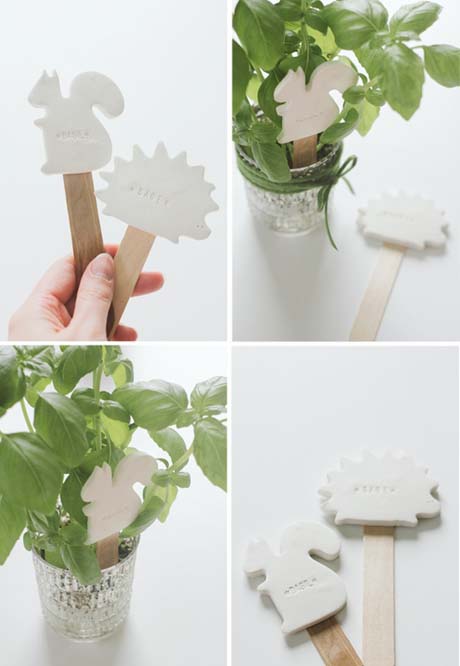
Got an old tub? Turn it into a fairy garden. Youngsters will love this cute little garden which features low-growing plants such as lobelias and alyssum. The grass is Irish moss, says Michelle, the garden’s creator. If you can’t find that here, try our native moss-like ground cover scleranthus, or baby’s tears (Soleirolia soleirolii) instead. Head over to Michelle’s site Burgh Baby to see how she made the fairy house and other objects.
Search Results for: fairy garden
Fairy garden
Q&A: How can I keep cats out of my garden?
 Q. Every day before getting involved with enjoying our garden we have the odious task of removing cats’ litter. We have tried just about every commercial remedy to keep these pests from digging our newly planted bedding plants and have now resorted to sections of plastic mesh, strategically placed over plants. You can imagine how spectacular that looks! How can we combat this problem? Elaine & Phil
Q. Every day before getting involved with enjoying our garden we have the odious task of removing cats’ litter. We have tried just about every commercial remedy to keep these pests from digging our newly planted bedding plants and have now resorted to sections of plastic mesh, strategically placed over plants. You can imagine how spectacular that looks! How can we combat this problem? Elaine & Phil
A. Unfortunately, bare soil is an open invitation for cats to dig. As soon as you start digging over a new garden or clear your beds, cats will sniff it out. I have yet to find a commercial product (or old wives’ trick) that works better than plastic mesh – it’s what I use after planting new vegetable seedlings; the seedlings grow up between the squares, and the mesh is removed once the plants are a decent size. It’s not particularly attractive, but it’s only for a short while and you can buy brown mesh to blend in with your soil. The other thing I do is dump some soil or old potting mix in a corner of my garden that’s not on view. My cat always makes a beeline for this instead of my vegetable patch. Shannon Lush, in her excellent book Spotless, recommends slathering Vicks VapoRub over several stones and dotting these around your garden. Lay them with the Vicks side down as rain will eventually rub it off. Jane
Q&A: Is horse manure ok for the garden?
Q. I can collect loads of stable manure (a mixture of sawdust and horse manure). Is this ok for the garden? Di
A. It is, but all animal manures need to be aged for at least six months before adding them to your garden. That’s because ‘raw’ manure releases nitrogen compounds and ammonia, which can burn plant roots and interfere with seed germination. You can dig raw manure straight into your soil, but you must leave the area for several months before planting up. Otherwise, add raw manure to your compost heap, or place it in a disused corner of the garden and let it age. Horse manure often contains weed seeds, so you may like to consider hot composting (where the pile reaches 45-65 degrees Celsius), to kill the seeds. For a hot compost heap, you need to build it all at once, instead of over several weeks. Jane
Q&A: How can I rid my garden of slaters?
Q. How can we rid our beach garden of slaters? We laid plastic over the sand, put down shingle, then scattered shells and lime chips on top. But now we’re plagued with slaters.
Pat
A. Slaters like to congregate in damp areas, under bark or garden debris and in compost heaps. They usually feed on decaying vegetation, tree bark and rotting wood, but they occasionally nibble at young seedlings and root vegetables. While slaters occur in a wide range of habitats, they are much more abundant in lime-rich soils as they need lime to build their hard shells. Crushed shell is a natural source of calcium carbonate (the active ingredient in agricultural lime), and lime chips, while they break down extremely slowly, on first use will have a fine coating of lime dust, which will consequently wash into the soil. The best way to get rid of slaters is to remove their food source – any rotting plant matter that may be lying around – as well as possible hiding places, like old wood, bricks, leaf litter or rubbish.
DIY clay plant labels

Aren’t these the cutest plant labels ever? The little critters are fashioned with cookie cutters and oven-bake clay. A customisable stamp is then used to print the name of the plant into the clay.
See how to make a fairy garden, a runner bean house, draw-on pavers and a cute DIY kids’ fence here.
Read more about starting a kids-friendly vegetable garden over at Twinkl.
Labels made by sayyestohoboken.com
Q&A: Can I transplant my citrus?

Q. I’d like to transplant my lime tree to another location in the garden. When is the best time to do this? Bronwyn
A. The best time to transplant trees and shrubs is during winter when the plants are dormant, as this ensures minimal shock from root disturbance. For greatest success, a month before you actually shift your tree, dig a circle around the drip line to severe the surface roots. On the day of moving, dig a large planting hole that will accommodate the root ball. Then dig up your tree, keeping as much soil as possible intact around the roots to avoid further root disturbance. Plant the tree in its new home, watering deeply and regularly after planting. Do not fertilise the tree until after a burst of growth in spring, then use a special citrus fertiliser. Jane










